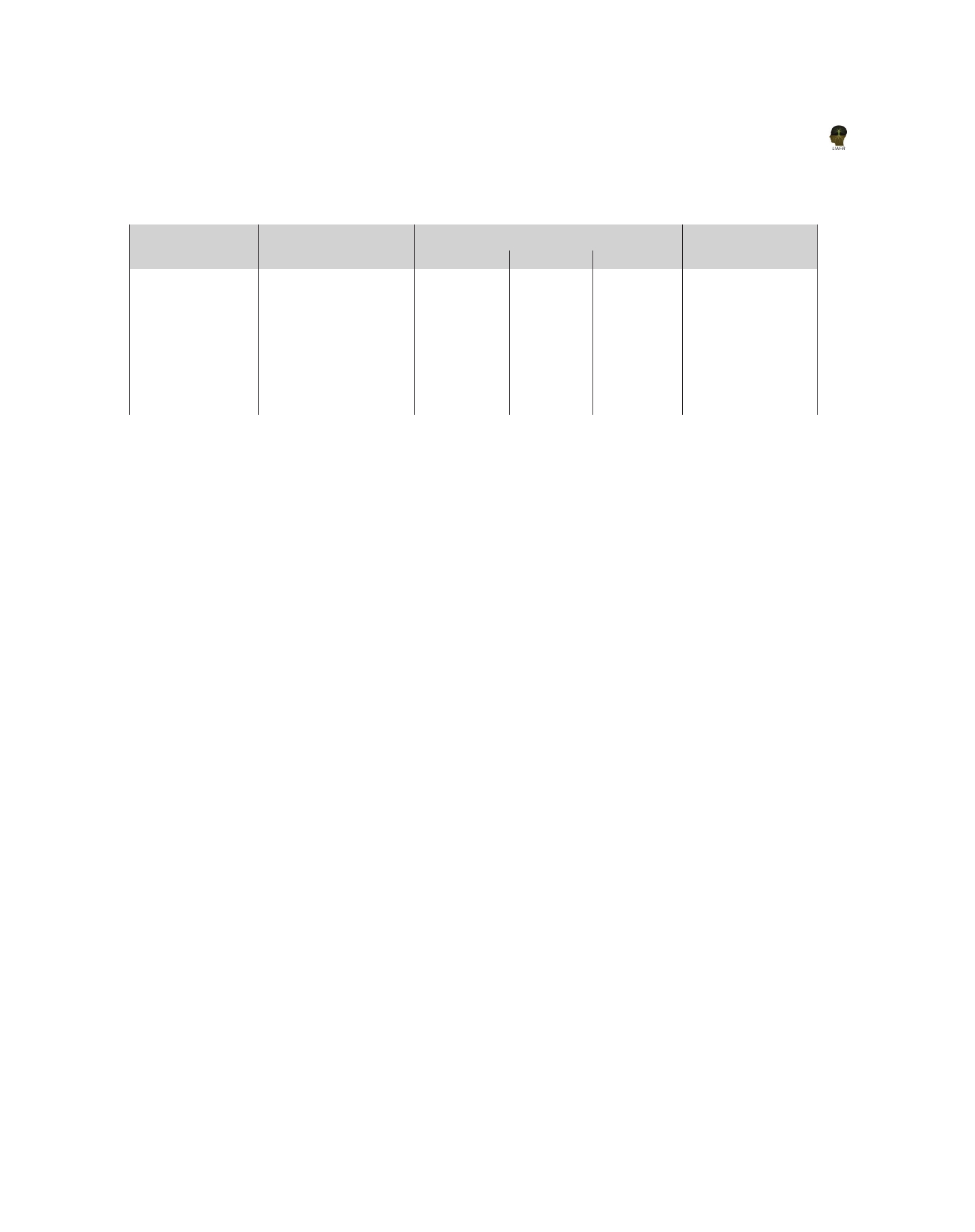
In vitro evaluation of plant growth regulators on tissue
Table 5. Effect of different concentration of partially purified of auxins from Pseudomonas aeruginosa An-1-kul and An-13-
kul on percent of root regeneration from in vitro developed shoots of cabbage ( Brassica oleracea var.capitata )
% root regeneration
Media
Rooting start after
Mean
R1
R2
R3
RM 0
No rooting
-
-
-
-
RM 1 (0.1mg/l)
12 days
100
100
100
100
RM 1 (0.15mg/l)
13days
25
25
25
25
RM 1 (0.2mg/l)
12 days
100
100
100
100
RM 13 (0.1mg/l)
10 days
25
25
25
25
RM 13 (0.15mg/l)
10 days
25
25
25
25
RM 13 (0.2g/l)
No rooting
-
-
-
-
on callus formation and shoot regeneration was
Discussion: Available literature showed that it was
shown by partially purified cytokinin from An-1-
the first preliminary study in India regarding the
kul at 2.0mg/l concentration in MS medium (lacking
comparative effect of the plant growth regulators
standard and commercial cytokinin) followed
(cytokinins and auxins) obtained Pseudomonas
by cytokinin from An-13-kul at 1.0 and 1.5 mg/l
strains. Inoculation of soybean callus with PGPR
concentration)(Table3and4).Ourinvestigationhave
strain of P. putida strain G11-32 showed significantly
shown that partially purified cytokinins at different
increased the growth of soybean callus in tissue
concentrations from both the strains An-1-kul and
bioassay in medium without vitamins (Chenway
An-13-kul when added in MS medium (without
and Nelson, 1991). While strain of P. putida G 2-8
commercial cytokinin) induced callus formation and
decreased the callus biomass. The study showed
shoot regeneration in some replications.
that the composition of growth medium affected the
Effect of partial purified auxins from Pseudomonas
callusbiomassformation.Callusbiomasshavelowest
aeruginosa An-1-kul and An-13-kul on root
growth when grown on medium without growth
regeneration in in vitro developed shoots and
regulators and bacterial inoculation had no effect on
development of roots
callus biomass when grown on NAA (naphthalene
acetic acid) and kinetin deficient media. But callus
Root growth promotion is often observed to be the
biomass was heightest when media contain growth
initial or sometimes the sole effect of inoculation with
regulators but no vitamins. Contradictory to these
PGPR (Holl et al., 1988; Chenway et al., 1988). This
result our studies showed positive results on callus
type of bioassay is important for effective screening
formation and initiation of shoot regeneration from
of putative PGPRs and the type of auxins used to
broccoli hypocotyl explants. It may be due to that
mark influence in the percentage of root formation
the partially purified cytokinins form Pseudomonas
(number of rooted shoots). The maximum percent of
aeruginosa strains An-1-kul and An-13-kul have been
root regeneration (100%) in different concentrations
used upto maximum concentration of 2.0mg/l.%
of auxins was recorded in rooting medium RM 1
shoot regeneration of 25% and 10% was observed
having 0.1 mg and 0.2mg/l concentration of partially
in different replications i.e. 3 shoots per 4 explant
purified auxins from An-1-kul. While only 25%
and 6 shoots per 20 explant (3/4 and 6/20 shoots)
root regeneration was observed in rooting media
were observed in two replications of treatment
containing 0.15mg/l and 0.1mg/l concentrations of
with 2.0mg/l of cytokinins from An-1-kul. Similarly
auxins from An-1-kul and An-13-kul after 13 days of
only one replication of treatment with 1.0 mg/l of
incubation, respectively (Table 5).
cytokinins from second strain i.e. An-13-kul showed
755